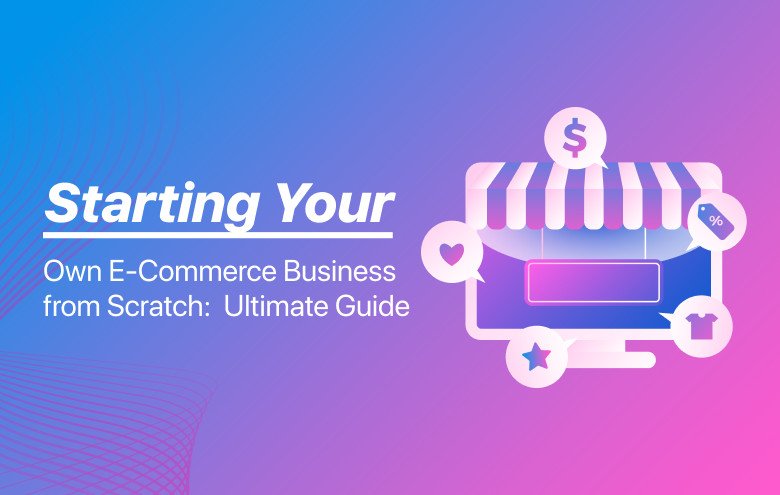Starting an e-commerce business can be an exciting venture, especially in today’s digital age where online shopping has become the norm. Here’s a step-by-step guide to setting up your own e-commerce business:
Step 1: Define Your Niche
Before diving into the world of e-commerce, it’s crucial to define your niche. What products or services will you offer? Who is your target audience? Research current market trends and see where you can carve out a unique space for your business.
Step 2: Develop Your Business Plan
A solid business plan is your roadmap to success. Outline your business goals, sales strategy, marketing plan, and financial projections. Consider how you’ll scale your operations as your business grows and what resources you’ll need.
Step 3: Choose Your Business Name and Legal Structure
Select a business name that reflects your brand and is easy to remember. Ensure the domain name is available for your website. Decide on the legal structure of your business (such as sole proprietorship, LLC, or corporation), which will affect your taxes, liability, and business registration requirements.
Step 4: Obtain Necessary Permits and Licenses
Depending on your location and what you’re selling, you may need specific permits and licenses to operate legally. Research the requirements in your area or consult with a legal expert to ensure compliance.
Step 5: Select Your E-commerce Platform
Choose an e-commerce platform that suits your business needs. Popular options include Shopify, WooCommerce (for WordPress users), and Magento. Consider factors like ease of use, customization capabilities, scalability, and security features.
Step 6: Set Up Your Website
Design a user-friendly website that reflects your brand. It should be easy to navigate, visually appealing, and optimized for mobile devices. High-quality product images and descriptions will enhance the shopping experience and help boost sales.
Step 7: Organize Your Payment Gateway
Your e-commerce site needs a reliable payment gateway to process customer payments. Options like PayPal, Stripe, and Square offer secure payment solutions that integrate seamlessly with most e-commerce platforms.
Step 8: Plan Your Shipping Strategy
Determine how you will handle shipping—will you offer free shipping, flat-rate, or variable rates based on weight and distance? Choose reliable shipping partners that align with your delivery times and handling standards.
Step 9: Implement Marketing Strategies
Develop a marketing plan to attract and retain customers. Use a mix of SEO, email marketing, social media marketing, and pay-per-click advertising to increase visibility and drive traffic to your website.
Step 10: Launch Your Business
Once everything is set up, launch your e-commerce website. Promote your launch through online ads, social media, email marketing, or even a launch event. Gather feedback and make adjustments to improve user experience.
Step 11: Analyze and Optimize
After launching, monitor the performance of your site and marketing efforts. Use analytics tools to track traffic, conversion rates, and other key metrics. Regularly update your inventory, optimize your marketing campaigns, and enhance your website based on customer feedback and analytics data.
Starting an e-commerce business requires dedication and attention to detail, but with the right approach, it can also be a rewarding endeavor. Keep learning and adapting as you grow, and you’ll build a strong foundation for a successful online business.
More Read : Startup




